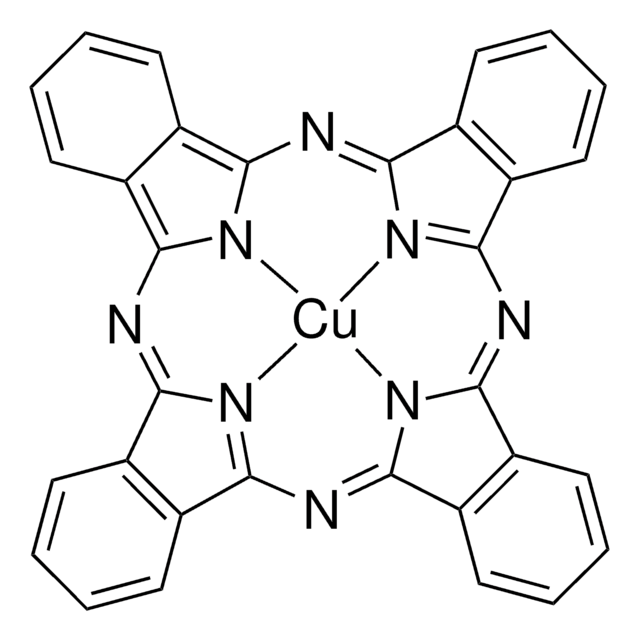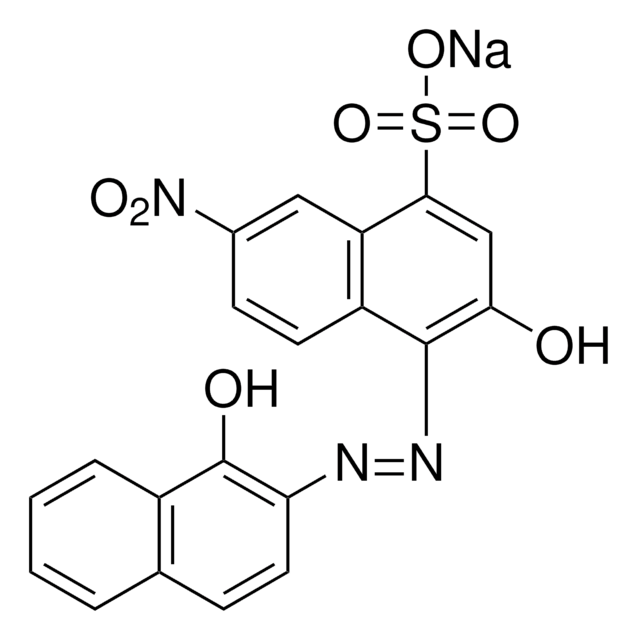432199
Leucoberbelin Blue I
Dye content 65 %
Synonym(s):
LBB
About This Item
Recommended Products
form
powder
composition
Dye content, 65%
technique(s)
microbe id | staining: suitable
mp
>300 °C (lit.)
solubility
water: 50 g/L
λmax
253 nm
application(s)
diagnostic assay manufacturing
hematology
histology
storage temp.
room temp
SMILES string
CN(C)c1ccc(cc1)C(c2ccc(cc2)N(C)C)c3ccccc3S(O)(=O)=O
InChI
1S/C23H26N2O3S/c1-24(2)19-13-9-17(10-14-19)23(18-11-15-20(16-12-18)25(3)4)21-7-5-6-8-22(21)29(26,27)28/h5-16,23H,1-4H3,(H,26,27,28)
InChI key
MCKLFIWDQVFMEK-UHFFFAOYSA-N
General description
Application
signalword
Danger
hcodes
Hazard Classifications
Eye Dam. 1 - Skin Corr. 1B
Storage Class
8A - Combustible corrosive hazardous materials
wgk_germany
WGK 3
ppe
Eyeshields, Faceshields, Gloves, type P3 (EN 143) respirator cartridges
Choose from one of the most recent versions:
Certificates of Analysis (COA)
Don't see the Right Version?
If you require a particular version, you can look up a specific certificate by the Lot or Batch number.
Already Own This Product?
Find documentation for the products that you have recently purchased in the Document Library.
Our team of scientists has experience in all areas of research including Life Science, Material Science, Chemical Synthesis, Chromatography, Analytical and many others.
Contact Technical Service






